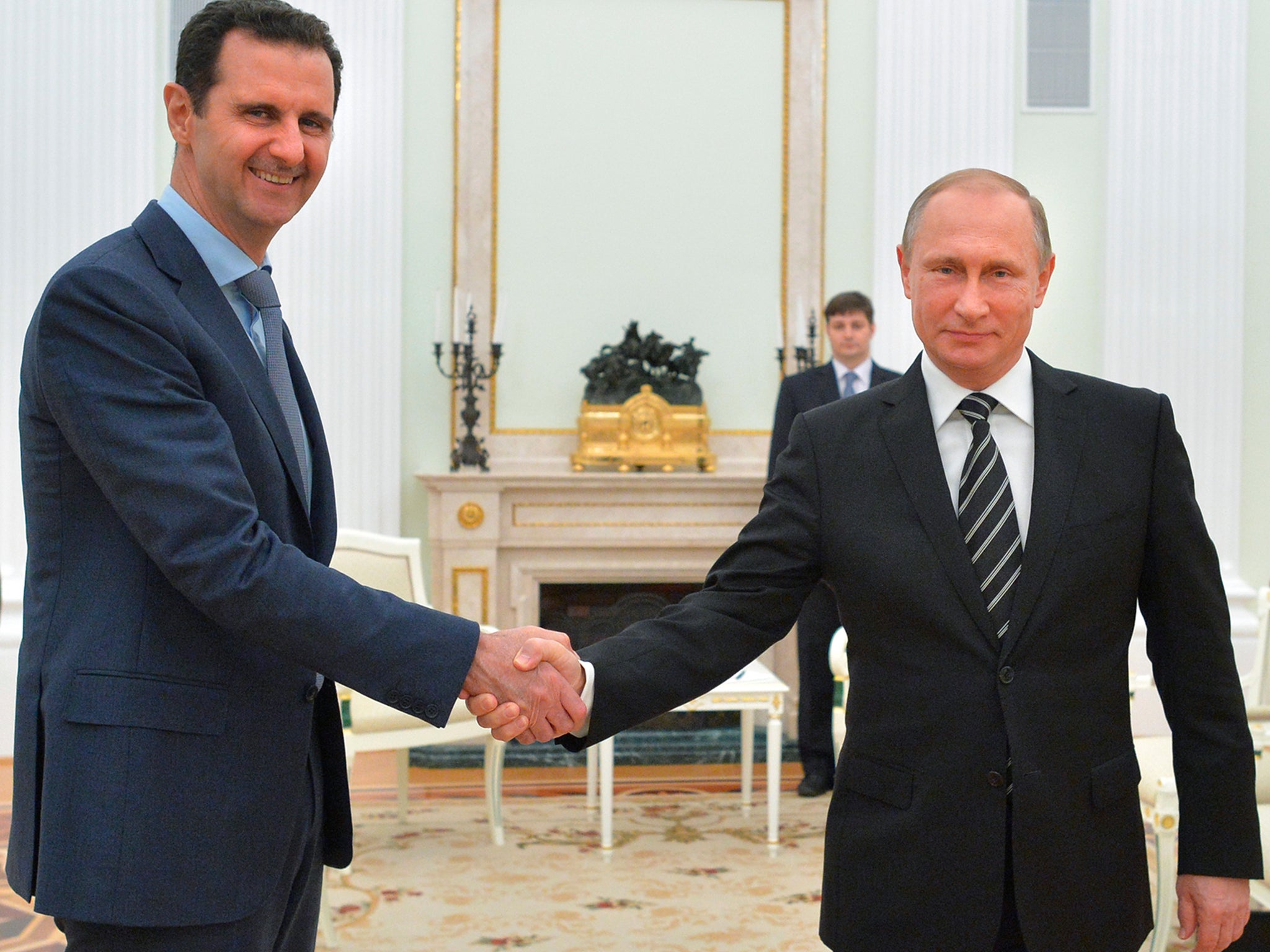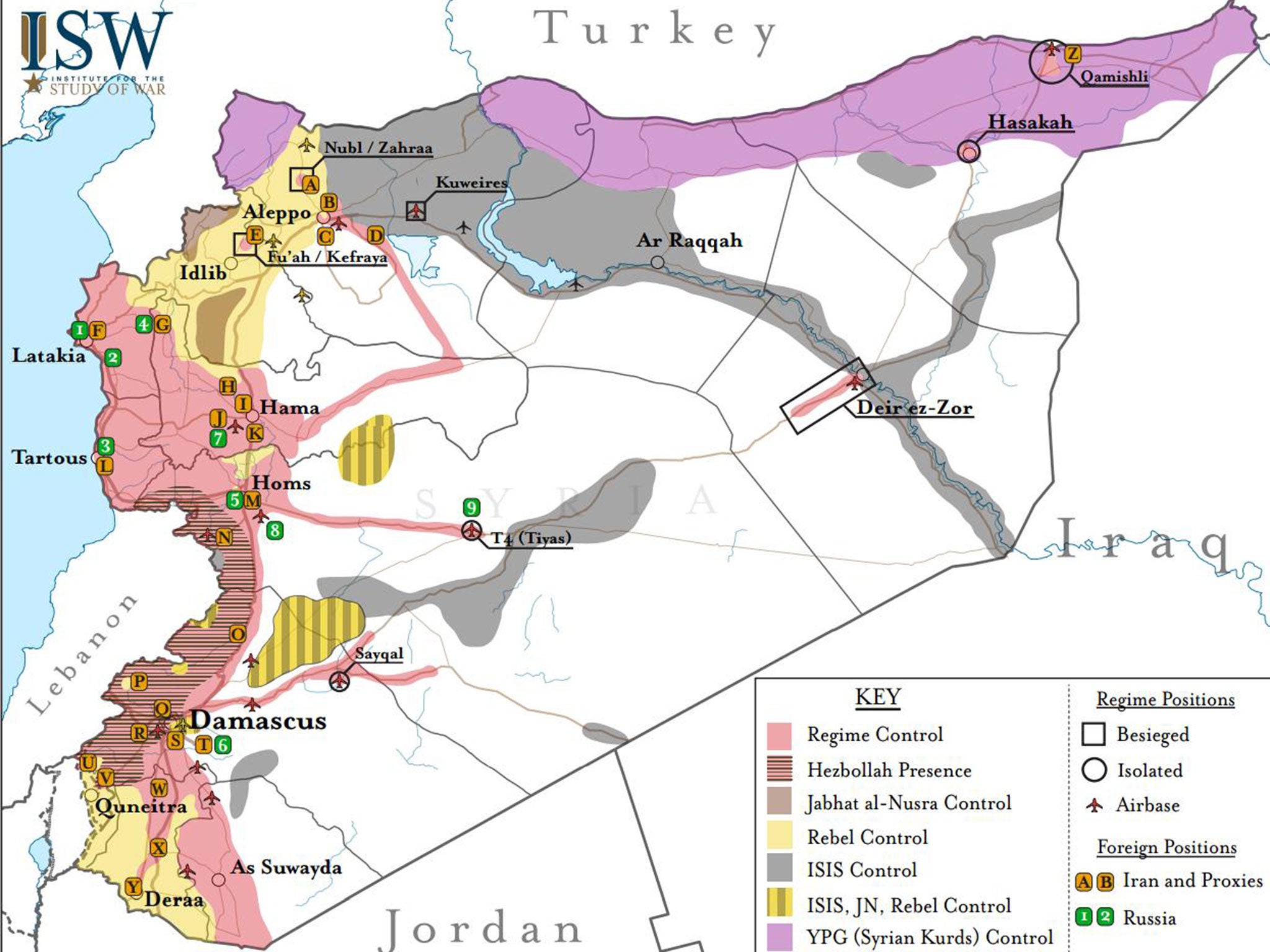Syria air strikes: Cartoon sums up the trouble with the international coalition against Isis
Francois Hollande's push for a broader coalition against the terror group is bringing historic enemies into the same conflict

Your support helps us to tell the story
From reproductive rights to climate change to Big Tech, The Independent is on the ground when the story is developing. Whether it's investigating the financials of Elon Musk's pro-Trump PAC or producing our latest documentary, 'The A Word', which shines a light on the American women fighting for reproductive rights, we know how important it is to parse out the facts from the messaging.
At such a critical moment in US history, we need reporters on the ground. Your donation allows us to keep sending journalists to speak to both sides of the story.
The Independent is trusted by Americans across the entire political spectrum. And unlike many other quality news outlets, we choose not to lock Americans out of our reporting and analysis with paywalls. We believe quality journalism should be available to everyone, paid for by those who can afford it.
Your support makes all the difference.A satirical cartoon has neatly illustrated the hostility between supposed allies in the widening international coalition against Isis.
MPs could be voting to add Britain to the mix of nations, armies and rebel factions already fighting in Syria tomorrow as the French President continues a push for greater co-operation.
The cartoon, by Salt Lake Tribune cartoonist Pat Bagley, shows Francois Hollande presenting “the anti-Isis coalition” to a sombre-looking Barack Obama.
Next to them, world leaders from across the Middle East and Europe are locked in an armed stand-off, with fellow coalition members holding each other at gunpoint.
In a convoluted network of historical alliances and feuds, four guns are being trained on Syrian President Bashar al-Assad, whose history of alleged war crimes and human rights abuses continues to divide world leaders.
He is in the sights of Turkey, Iraqi Kurdistan, Saudi Arabia and rebels, while his ally, a topless Russian President Vladimir Putin, is holding up opposition forces and another unseen target.
Meanwhile, the Kurdish People’s Protection Units (YPG) are aiming at Turkish President Recep Tayyip Erdogan, as is Masoud Barzani, the President of Iraqi Kurdistan.
Iran’s Supreme Leader, Ayatollah Khamenei, is aiming at Saudi Arabia, while in the bottom right hand corner, an Iraqi general in battle dress is holding a gun to his own head.
On the other side of the room, the conflict between Hamas and Israel, represented by Prime Minister Benjamin Netanyahu, continues in the endless Mexican standoff.
The belligerents represented are just a fraction of those fighting on land or in the air in the Syrian civil war, which started as the Assad government moved to crush the Arab Spring of 2011.
Parties in the conflict are divided roughly between four parties – the regime, opposition forces, Isis and Rojava (Kurds).
Defecting Syrian officers formed the Free Syrian Army (FSA) and the alliance has become a loose coalition of anti-government rebel groups controlling territory in pockets of western Syria.
They are predominantly fighting President Assad’s forces, as well as trying to stop encroachment in their territories by Isis and al-Qaeda affiliate Jabhat al-Nusra.
But the FSA does have a shaky alliance with the Islamic Front, a Sunni Islamist rebel coalition said to be backed and armed by Saudi Arabia, which is fighting for its own “Islamic state”.

Another key party is Jaysh al Fatah, the “Army of Conquest”, which incorporates more Islamist groups including one of the most powerful groups in the conflict, Ahrar al-Sham.
Isis is fighting on all fronts, although it has been known to temporarily work with Islamist rivals in large-scale advances before seeking to wrest control.
One of its key enemies is Kurdish forces with the People’s Protection Units (YPG) and Kurdistan Workers’ Party (PKK), who have pushed extremists back in north-eastern Syria and along the Turkish border.
They are viewed as valuable allies by Europe and the US, but are the enemies of Turkey, which has been accused of targeting Kurdish forces rather than Isis, while Russia and regime raids have targeted “moderate” rebels as well as Islamists.
President Assad’s forces are also being supported by Hezbollah, Iran, Houthis and allied loyalist militias.
Join our commenting forum
Join thought-provoking conversations, follow other Independent readers and see their replies
Comments